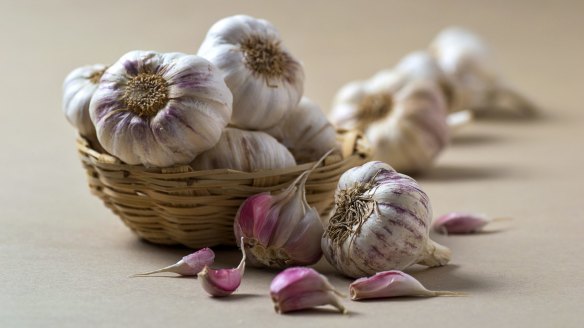Is it safe to infuse garlic in oil?

Is it OK to infuse garlic in oil? K. Lindsay
People who react to FODMAP compounds in food often infuse garlic into oil so they can enjoy the flavour without the intestinal upsets. But putting garlic in oil and storing it at room temperature is the perfect recipe for poisoning the recipients. There is a common bacterium called Clostridium botulinum that exists naturally in the environment, even on garlic. It is usually inactive, but under the right conditions, spores can grow into bacteria that produce toxins that cause botulism. It is an anaerobic bacterium, which means it thrives in the absence of oxygen, such as under a layer of oil. You will notice a lot of food preserved under oil, but this food has been treated to make it acidic. C. botulinum does not thrive in acidic conditions, under 4.6 pH. Vinegar, for example, has a pH of around 2.8 and lemon juice 3. Persian feta under oil has undergone natural lactic fermentation that brings its pH down to 4.4, which is why it has that pleasant tang. Properly preserved olives also undergo lactic fermentation and, as a result, are rendered safe to place under oil. Even bottled pesto – basil leaves, nuts and cheese in oil – is given a dose of "acidity regulator", either vinegar or lactic acid, to render it safe. To make "safe" garlic-infused oil, roughly chop 225g garlic and steep for 24 hours in a citric acid solution. To make the solution, dissolve 1 tablespoon of citric acid – available in the supermarket's baking section – in two cups of water. Leave this at room temperature. After 24 hours, drain off the solution, then add the garlic to a clean jar and cover with olive oil. This will store safely at room temperature.
My onion rings split when I fry them. X. Ryan
Along with fish fingers and chocolate Big M, onions rings are my guilty secret junk food. I tried to make them but, like you, experienced trouble. It turns out there is a delicate but determinedly sticky membrane between each layer of the onion. It is translucent, skin-like, and cooks much faster than the thicker ring of flesh. This means it can contract and pull through the batter, breaking the seal and allowing the oil inside. You can remove the membrane after slicing, but this is a stinky, tear-filled ordeal. Instead, slice the onions into rings, place on a tray, and place in the freezer for 24 hours. The water in the cells will expand as it freezes, rupturing cells and making the membrane easier to remove once the onion rings have thawed. The rings' texture will be softer – and more like those served at certain fast-food joints.
Letters
Recently we mentioned that prawn and lobster shells can be used to make a bisque, giving them one more use before they hit the bin. Readers had a few quirkier suggestions. One feeds her prawn shells to the dog, not something condoned here, while another flushes theirs down the toilet. Obviously they have never had a septic tank. P. Waldren digs a hole in his vegetable garden and buries the prawn shells there, a much better solution. On the subject of marmalade, we discussed that the word derives from the Greek melimelon, a combination of the words for honey and apple. From this comes marmelada, Portuguese for quince paste. N. Silke offers this alternative and apocryphal etymology. "I remember hearing about the story of Mary, Queen of Scots, visiting Portugal. She was quite sick, and her lady-in-waiting would come to the kitchen and say in European courtly lingua franca, "Madame est malade", the lady is sick. The Portuguese thought she wanted marmalade or quince paste."
Send your vexing culinary conundrums to brainfood@richardcornish.com.au or tweet to @foodcornish
Appears in these collections
- More:
- Food
- Brain food
